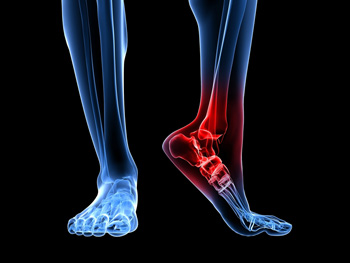 Foot and ankle health is important to runners, both those who run recreationally and those who run professionally. Runners are susceptible to a variety of overuse injuries, including pain in the heel, pain in the ball of the foot, stress fractures or Achilles tendon problems. Heel pain is most commonly associated with plantar fasciitis, which is the inflammation of the tendon that connects the heel bone to the ball of the foot. Pain in the ball of the foot can indicate a neuroma, a pinched nerve between the toes, or inflammation in the ball of the foot. Achilles tendon pain can indicate Achilles tendonitis, and rest will be necessary. Stress fractures, which occur as tiny breaks in the bones, can lead to swelling and pain, and they will need to be rested as well. If you are a frequent runner and are experiencing pain in the feet or ankles, make sure to consult with a podiatrist for proper diagnosis and treatment.
Foot and ankle health is important to runners, both those who run recreationally and those who run professionally. Runners are susceptible to a variety of overuse injuries, including pain in the heel, pain in the ball of the foot, stress fractures or Achilles tendon problems. Heel pain is most commonly associated with plantar fasciitis, which is the inflammation of the tendon that connects the heel bone to the ball of the foot. Pain in the ball of the foot can indicate a neuroma, a pinched nerve between the toes, or inflammation in the ball of the foot. Achilles tendon pain can indicate Achilles tendonitis, and rest will be necessary. Stress fractures, which occur as tiny breaks in the bones, can lead to swelling and pain, and they will need to be rested as well. If you are a frequent runner and are experiencing pain in the feet or ankles, make sure to consult with a podiatrist for proper diagnosis and treatment.
Exercising your feet regularly with the proper foot wear is a great way to prevent injuries. If you have any concerns about your feet, contact the podiatrists of Boston Common Podiatry. Our doctors will treat your foot and ankle needs.
How to Prevent Running Injuries
Many common running injuries are caused by overuse and overtraining. When the back of the kneecap starts wearing out and starts causing pain in your knee, this is commonly referred to as runner’s knee. Runner’s knee is a decrease in strength in your quadriceps and can occur if you’re not wearing properly fitted or supporting shoes. To prevent runner’s knee, focusing on hip strengthening is a good idea, as well as strengthening your quads to keep the kneecaps aligned.
What Are Some Causes of Running Injuries?
- One cause of a common running injury is called iliotibial band syndrome.
- Plantar fasciitis is also another common injury.
- Stress fractures can occur from overtraining, lack of calcium, or even your running style.
Best Ways to Prevent Running Injuries
- Wear footwear that fits properly and suits your running needs.
- Running shoes are the only protective gear that runners have to safeguard them from injury.
- Make a training schedule. Adding strengthening exercises as well as regular stretching can help keep you strong and limber and can lessen the possibility of injuries.
- Stretching keeps muscles limber; this will help you gain better flexibility.
If you have any questions please feel free to contact our office located in Boston, MA . We offer the newest diagnostic and treatment technologies for all your foot and ankle needs.









